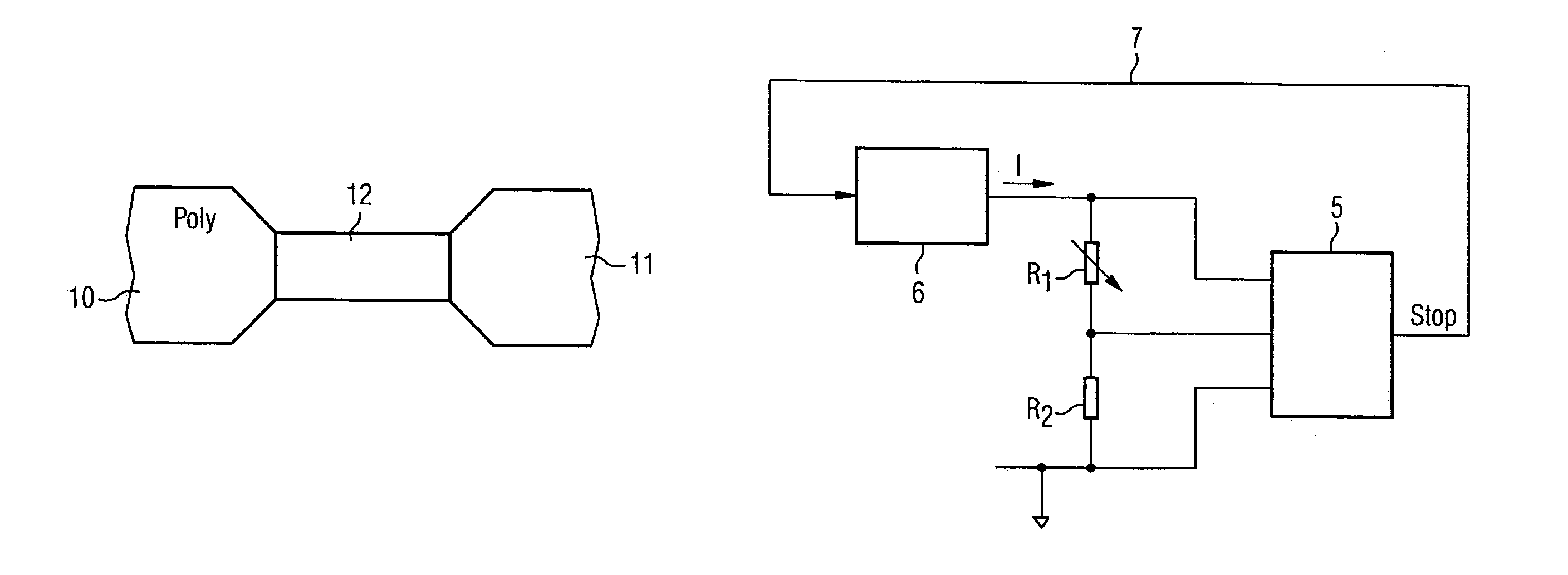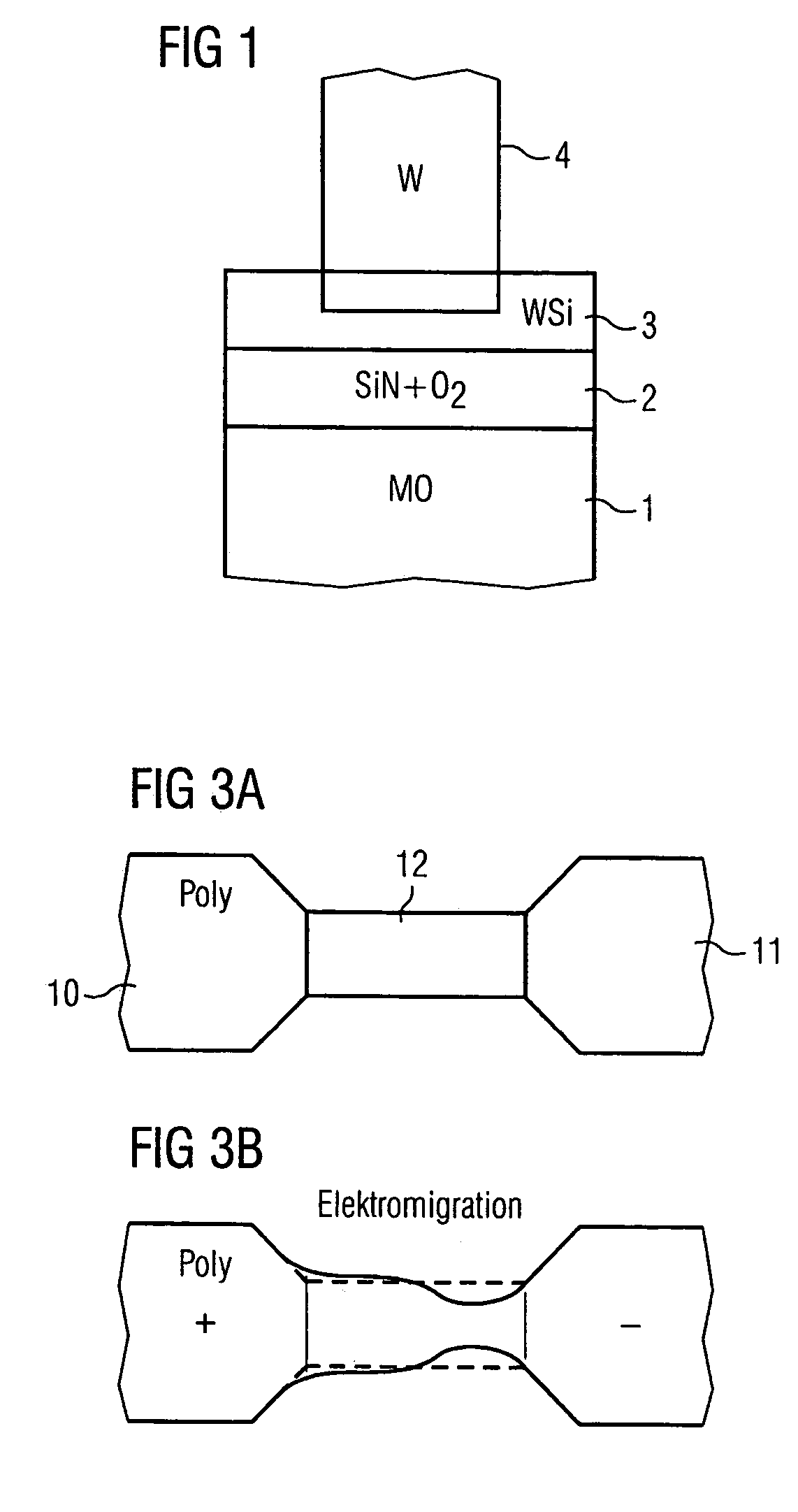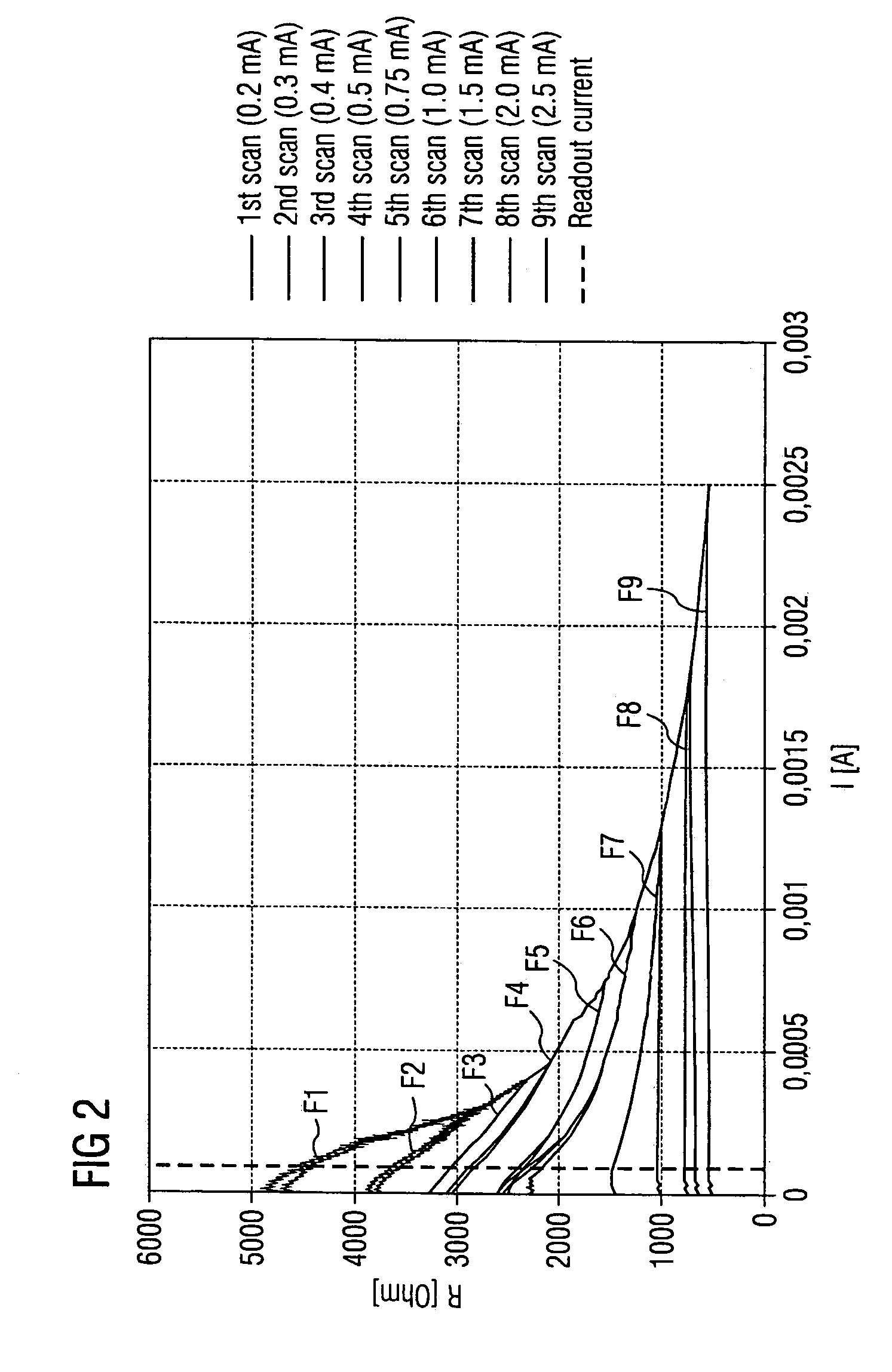Method and circuit for adjusting a resistance in an integrated circuit
a technology of integrated circuits and resistances, applied in the direction of solid-state devices, instruments, semiconductor/solid-state device details, etc., can solve the problems of large-area fixed resistances which are difficult to control, nonlinear resistance characteristics, and large area required for this resistan
- Summary
- Abstract
- Description
- Claims
- Application Information
AI Technical Summary
Benefits of technology
Problems solved by technology
Method used
Image
Examples
Embodiment Construction
[0031]FIG. 1 shows an antifuse structure. It has a first conductive layer 1 which is preferably built from a metalizing layer. Above this, a dielectric layer 2 is applied which has, e.g., a dielectric constant ∈R=5.5. Naturally, dielectric layers having other dielectric constants can also be used. The dielectric layer 2 can have silicon nitride in which oxygen molecules are implanted.
[0032]Above this, a second conductive layer 3 is deposited which is contacted via a conductor connection 4. The second conductive layer 3 preferably has tungsten silicate but can also have other materials which are conductive. The conductor connection 4 is preferably constructed of tungsten, but other electrically conductive materials are also suitable for it, such as, e.g., aluminum, copper etc.
[0033]After such an antifuse structure has been produced, the antifuse structure is initially nonconductive since a nonconductive dielectric is arranged between the first conductive layer 1 and the second conduc...
PUM
 Login to View More
Login to View More Abstract
Description
Claims
Application Information
 Login to View More
Login to View More - R&D
- Intellectual Property
- Life Sciences
- Materials
- Tech Scout
- Unparalleled Data Quality
- Higher Quality Content
- 60% Fewer Hallucinations
Browse by: Latest US Patents, China's latest patents, Technical Efficacy Thesaurus, Application Domain, Technology Topic, Popular Technical Reports.
© 2025 PatSnap. All rights reserved.Legal|Privacy policy|Modern Slavery Act Transparency Statement|Sitemap|About US| Contact US: help@patsnap.com



